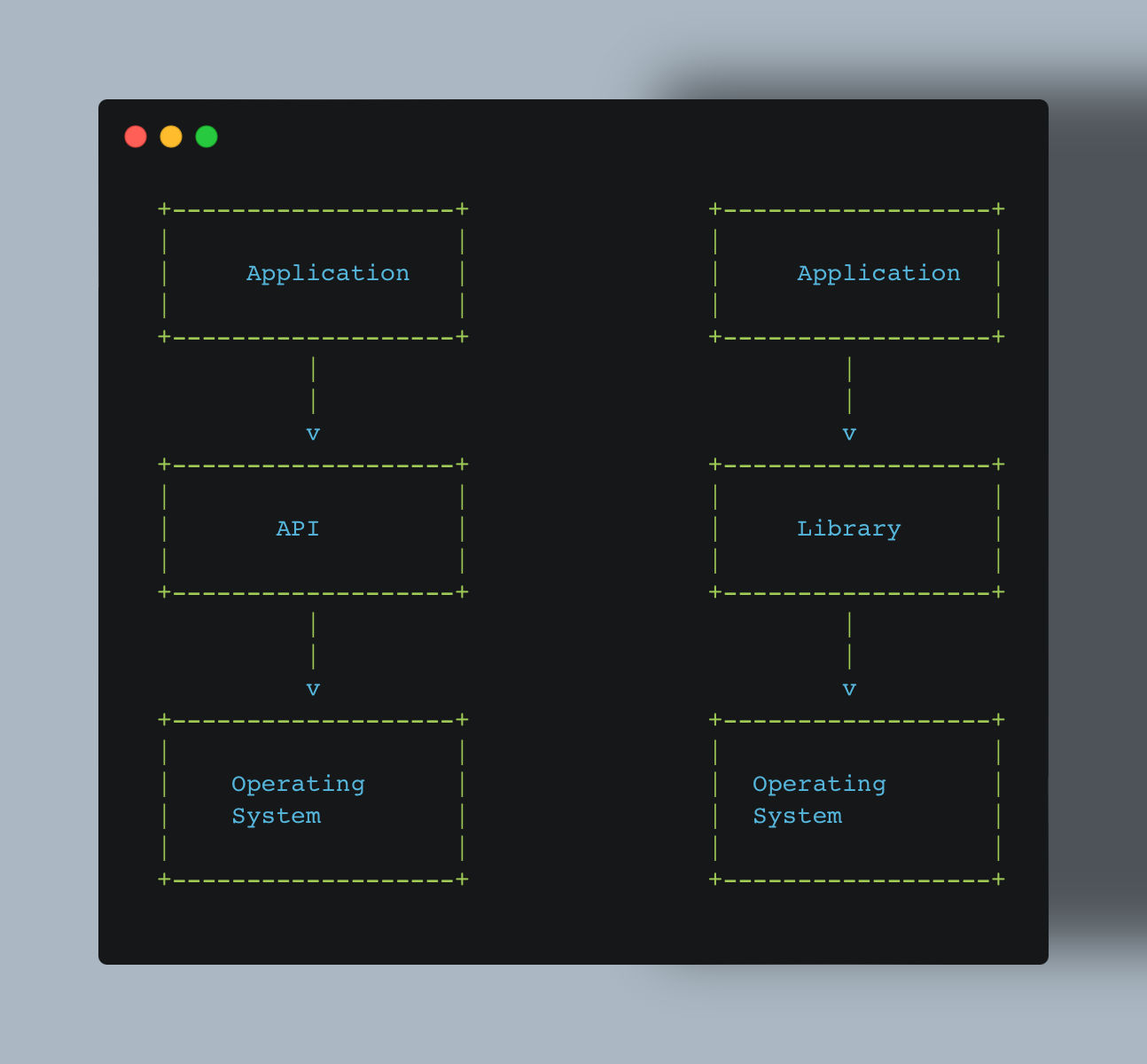Understanding the Difference Between APIs and Libraries
When diving into the world of software development, it’s essential to grasp the distinctions between various terms and concepts. Two commonly used but often misunderstood terms in this field are APIs (Application Programming Interfaces) and libraries. Let’s explore what sets them apart.
1
2
3
4
5
6
7
8
9
10
11
12
13
14
15
16
17
18
19
20
21
22
+-------------------+ +------------------+
| | | |
| Application | | Application |
| | | |
+-------------------+ +------------------+
| |
| |
v v
+-------------------+ +------------------+
| | | |
| API | | Library |
| | | |
+-------------------+ +------------------+
| |
| |
v v
+-------------------+ +------------------+
| | | |
| Operating | | Operating |
| System | | System |
| | | |
+-------------------+ +------------------+
What is an API?
An API, which stands for Application Programming Interface, is a set of rules, protocols, and tools that allow different software applications to communicate with each other. It acts as an intermediary that defines how requests and responses should be structured and processed. APIs are crucial for enabling the interaction between different software components, services, or systems.
Key Points About APIs
- APIs facilitate communication between software systems.
- They define the methods and data structures for interaction.
- APIs are language-agnostic and can be used across various programming languages.
- They often serve as a bridge between different software components or even third-party services.
What is a Library?
In contrast, a library is a collection of pre-written code, functions, and routines that developers can utilize to perform specific tasks within their own software applications. Libraries are essentially reusable pieces of code that help developers avoid reinventing the wheel for common tasks.
Key Points About Libraries
- Libraries consist of pre-existing code that simplifies common programming tasks.
- They are usually specific to a particular programming language or framework.
- Developers include libraries directly in their code, making them an integral part of the application.
- Libraries offer functions and classes that can be incorporated into a project to enhance its functionality.
The Distinction
The primary distinction between APIs and libraries lies in their purpose and usage:
APIs are interfaces designed to enable communication between different software systems or components. They define the rules and protocols for interaction, making it possible for applications to exchange data and functionality seamlessly.
Libraries, on the other hand, are collections of code that provide specific functionality to developers. They are typically used within the same programming language or framework and are included directly in the codebase of an application.
When to Use Each
Understanding when to use APIs or libraries is crucial for effective software development:
APIs are ideal when you need to connect your application to external services, access data from web servers, or interact with components developed by others. They enable integration with third-party systems and foster interoperability.
Libraries are perfect for streamlining common tasks within your application. When you find yourself writing similar code repeatedly, consider using a library to simplify your development process and reduce redundancy.
Conclusion
In conclusion, APIs and libraries are essential tools in software development, each serving a distinct purpose. APIs facilitate communication between software systems, while libraries provide reusable code for common tasks. Understanding when and how to use them will empower you to build more efficient and interconnected software applications.
